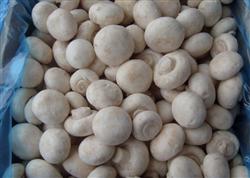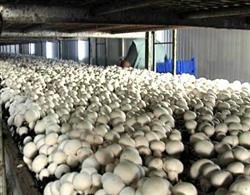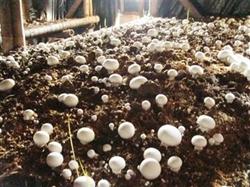High-yield cultivation techniques of Pleurotus ostreatus

Pleurotus ostreatus, also known as white mushroom, foreign mushroom, mushroom, etc., is the most widely cultivated species, its meat is fresh and tender, delicious, rich in protein and a variety of essential amino acids and trace elements, and has a certain medical value, so it is more and more popular among people. First, the cultivation season and place: generally, it can be cultivated from autumn and winter to early spring, and it can be cultivated by using plastic shed, waste warehouse, idle cold storage and so on. 2. Selection and preparation of culture materials 1. Main materials: select crop straw with few diseases and insect pests and no mildew (such as wheat straw, corn straw, corncob, etc.) and livestock and poultry manure. 2. Auxiliary materials: urea, cake fertilizer, lime, gypsum, calcium superphosphate. 3. Preparation: generally 100 square meters of cultivated area requires 500 kg of wheat straw, 500 kg of horse dung (dry manure), 20 kg of cake fertilizer, 10 kg of urea, 15 kg of calcium phosphate and 15 kg of gypsum powder. 3. Stacking and fermentation of culture materials 1. Pretreatment: wet the sun-dried dung water a week before stacking, heap into a heap of about 1 meter high and 2 meters wide, turn the pile once every 3-4 days, and the heap temperature is about 55 ℃. If wet dung is used, it should be carried out about 20 days before stacking, generally without water, the stack should be loose, and turn the pile once in 5 days or so. 2-3 days before stacking, if wheat straw is used, because the straw is waxy and the stem is hard, it must be flattened and pre-wet, and it can be soaked in the pool or wet layer by layer on the site and step on it with your feet. If you use cake fertilizer, mix it with 0.5% dichlorvos the day before use and cover it with plastic sheeting to kill pests. 2. Building a pile: when stacking materials, first lay a layer of wheat straw 30 cm thick and 2.5 meters wide in the lower layer, and the upper layer of dung is about 2 cm, and the dung grass should be paved, so that a layer of dung is spread with about 10 layers each, with a height of about 1.5 meters, and the top layer is covered with a layer of dung, and cake fertilizer, urea and lime are added and watered from the fourth layer. After the pile is finished, punch 2-3 ventilation holes with wooden sticks in the middle, cover with grass rags or woven bags, cover with plastic sheeting on rainy days, and remove immediately after rain. The temperature of the stack should be measured on the second day, and the temperature should be less than 50 cm. Usually, after 2-3 days of stacking, the material temperature will rise to 70 ℃. 6-7 days after the pile is built, the first turn of the pile will be carried out. The wheat straw should be shaken loose, the pile should be turned inside and down, and the dung straw should be paved. Lime and calcium superphosphate should be added from the fourth layer. The focus of this increase is to pour enough water. The material temperature can reach 75-80 ℃ in 48 hours after turning the pile. After 5 days for the second turn, turn up and down thoroughly inside and outside, layer by layer and then add calcium superphosphate and lime, this turn must not water too much, generally hold the culture material by hand can squeeze out 3-4 dripping water is appropriate, rainy days to cover plastic sheet with a stick to support, so that the material temperature up to 60-65 ℃, and then wait 4-5 days when the material temperature reached 60 ℃ for the third turn, if there is a piece of dung to be mashed, and then add lime. The fourth turn is carried out 4 days after the third turn, this time to check the water content, hold the culture material by hand, it is appropriate to drip 1-2 drops between the fingers, if the moisture is not suitable, it can be adjusted with 1% lime water, and pay attention to pest control. After 3-4 days, the temperature in the pile is maintained at about 50 ℃ and tends to be stable for the last turn. The pn value is 7.8-8, and the water content is 60-63%. The fermentation takes about 30 days, and the final standard should be met: ① has a soft texture and holds it into a ball, which will disperse as soon as it shakes. ② has a strong flavor of raw materials. ③ wheat straw will be broken as soon as it is beaten. The ④ color is brown. ⑤ is free of pests and miscellaneous bacteria. 3. Post-fermentation. If you carry out secondary fermentation, transport the material to the mushroom room while it is hot after three times of turning, close the doors and windows, and put the material on the middle bedstead to increase the thickness, keep the temperature, do not heat it immediately, and heat it up again after 5-6 hours when the material temperature no longer rises. Boil water outside the shed, send the steam into the shed to heat up, rise to 60-62 ℃, and maintain for 6-8 hours. Maintain 6-8 days when the material temperature drops to 50-55 ℃, then cool down, gradually drop to 45-50 ℃, open the doors and windows, and let the material temperature drop quickly to about 25 ℃. 4. Mushroom houses without post-fermentation sowing should be disinfected before feeding. The material stack should be sprayed with 1R800 times carbendazim and covered with film fumigation for 24 hours. The mushroom room should be sprayed with concentrated lime water once, fumigated with formaldehyde, or disinfected with sulfur. Open the doors and windows and turn the shelves. When the temperature of the culture materials after secondary fermentation drops below 40 ℃, the shelves can be turned and the materials can be divided into several layers of bed frames. The upper and lower inside and outside are evenly flat, 15-20 cm thick and 60-63% water content. If it is too dry, adjust it with 800 times carbendazim water. If it is too wet, open the doors and windows to ventilate until appropriate. Before sowing, the room temperature is below 20-25 ℃, and the material temperature is stable below 28 ℃. Sowing utensils should be scrubbed and disinfected with 0.1% potassium permanganate solution, and 5-6 bottles of bacteria (500ml canned bottles) should be used per square meter. Dig a 3cm hole with your fingers and put a strain in it, cover it with the surrounding material and cover it with 10cm × 10cm. After sowing a bed, sprinkle the remaining bacteria on the surface, spread a layer of material, cover the material with a newspaper or woven bag (detoxify with 0.1% potassium permanganate), and remove 7 around. Fifth, the management temperature during the germicidal period is controlled at 25-26 ℃, and the air phase temperature is about 75%. Doors and windows should be closed 3-5 days after sowing. If the temperature exceeds 28 ℃, ventilation can be done at night. About 7 days after sowing, remove the newspaper and the basic cover of the hyphae and ventilate the hyphae. When the mycelium eats 1 / 2 depth, pry loose the material that has begun to harden and agglomerate, and then flatten the material to strengthen the ventilation to promote the mycelium to grow downward. In addition, the occurrence of miscellaneous bacteria and insect pests should be checked frequently, and timely measures should be taken if found. Under normal circumstances, about 20 days after sowing, the hyphae can basically grow full of culture materials. 6. Keep the material surface dry before and after covering the soil. Do not spray water on the material surface. If there are miscellaneous bacteria, sprinkle a layer of lime powder on the contaminated area. 0.5% of the pests are re-killed by dichlorvos. The material surface should be grasped by hand, scratched the bacteria, then leveled, gently pressed with a plank, and then covered with soil when the hyphae grew to the end. With cultivated layer of pastoral soil, add appropriate amount of rice bran, lime or wood ash, adjust PH value 7.5-8, sterilize with carbendazim, cover film for 24 hours, turn and mix again before use, cover soil should be thick and uniform, thickness 2-2.5cm, when hyphae form small white spots in the soil layer to form primordium, cover the soil layer again, about 1cm thick. Within 2 days after covering the soil, spray about 5 kilograms of water per square meter and spray it into the soil layer 4-5 times, so that the soil layer should be wet, open windows and ventilation when spraying water, close the doors and windows to the third day, and induce the mycelium to grow into the soil layer. when forming the primordium, cover a layer of semi-dry and semi-wet soil, not cover the wet soil, and transfer water after covering this layer of soil, dry first and then wet, spray gently, and gradually increase the humidity of fine soil. 7. The management of the mushroom period generally produces mushrooms 15-18 days after covering the soil. Those who produce mushrooms in autumn should spray mushroom water into the air, walls and ground, so that the air relative humidity can reach about 90%. The temperature in the early stage is relatively high, and it is necessary to be ventilated in the morning and evening. When the temperature is low in the later stage, ventilation should be done at noon, doors and windows should be closed in the morning and evening, and attention should be paid to heat preservation. After picking a batch of mushrooms, clean the bed in time, remove dead mushrooms and mushroom feet, and fill the mushroom pits. Generally, 4-5 tide mushrooms can be picked in autumn. In winter, the temperature drops obviously. If you continue to produce mushrooms, you must have heating facilities to keep the minimum indoor temperature above 8 ℃ and 15-17 ℃ during the day. In addition to doing a good job of heat preservation, you should also be properly ventilated. If you do not have mushrooms, you can tidy up the bed surface and cover a layer of thick grass on the soil. The back wall and east-west wall outside the mushroom house should also be piled with grass or straw to do a good job of heat preservation. In order to produce mushrooms when the temperature is suitable in spring. When the temperature gradually rises, the management of spring mushrooms begins. In the early stage, it is necessary to do a good job of heat preservation, clean the bed cover, clean inside and outside the mushroom room, paint the mushroom room with thick lime water (15-20% concentration), when the temperature in the mushroom room is stable above 10 ℃, use water reasonably according to the situation, increase the times of spraying water as the mushroom body grows, keep the air relative humidity about 90%, and do a good job of topdressing. In order to increase the late yield. Eighth, harvest in time, gently pinch the mushroom cover with the thumb, index finger and middle finger, rotate and pick it down lightly and quickly. if there are tufted mushrooms and most of them have grown up, they can be harvested as a whole, and if only individual mushrooms are large, large fruiting bodies can be cut off with a knife.
- Prev

High-yield cultivation of Pleurotus ostreatus in bed frame
1. Mushroom house and bed frame structure mushroom house is 19.6m long from east to west, 9m wide from north to south, 2.5m high from front and rear wall and 3.5m high from gable. The wall is bricked with lime. Put cement on the outside; wipe it with lime mud on the inside, then brush it with lime mud. There are 4 25cm × 20cm ventilation windows up and down the front and rear walls facing the aisle. The first one passes through.
- Next

Management of mushroom emergence period of Pleurotus ostreatus: how to make it produce more mushrooms? The omen of high-yield cultivation techniques of Pleurotus ostreatus before mushroom emergence
First, control the temperature and humidity. The cultivation of Pleurotus ostreatus begins to produce mushrooms about 20 days after covering the soil, the temperature is maintained at 20: 24 ℃, and the air relative humidity is 80% to 85%. During this period, it is generally impossible to spray water on the material surface, too wet and breathable, the hyphae are difficult to extend into the soil layer, too dry hyphae are sparse, maintain suitable temperature and humidity, and the hyphae are white and exuberant.
Related
- Fuxing push coffee new agricultural production and marketing class: lack of small-scale processing plants
- Jujube rice field leisure farm deep ploughing Yilan for five years to create a space for organic food and play
- Nongyu Farm-A trial of organic papaya for brave women with advanced technology
- Four points for attention in the prevention and control of diseases and insect pests of edible fungi
- How to add nutrient solution to Edible Fungi
- Is there any good way to control edible fungus mites?
- Open Inoculation Technology of Edible Fungi
- Is there any clever way to use fertilizer for edible fungus in winter?
- What agents are used to kill the pathogens of edible fungi in the mushroom shed?
- Rapid drying of Edible Fungi

